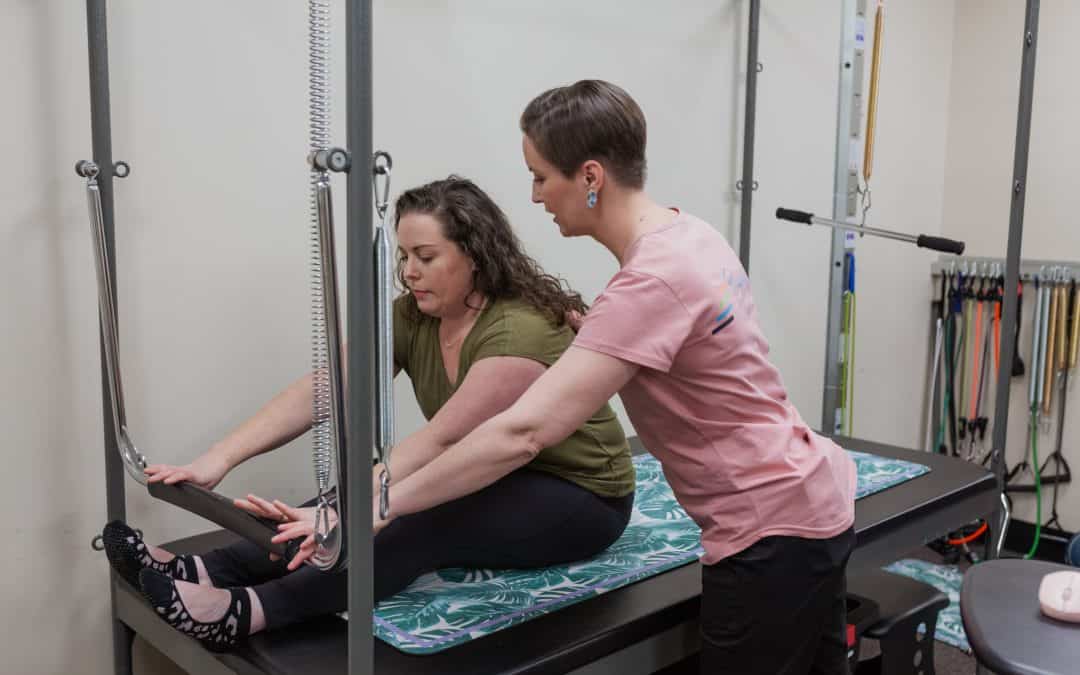Polycystic Ovary Syndrome (PCOS) is a chronic endocrine condition characterised by insulin resistance, inflammation and anovulation (when an egg is not released from your ovaries). It affects roughly 12-18% of women during their reproductive life, with up to 70% of women remaining undiagnosed.
PCOS can have a variety of symptoms, which will change as you age due to your changing hormones.
The most common symptoms are;
- irregular periods
- infertility
- increased testosterone levels (causing issues such as acne and facial/body hair)
- weight management issues
- increased risk of diabetes and cardiovascular disease
These can all impact your self-esteem and emotional wellbeing, so it’s important to address it sooner rather than later.
More and more Doctors are prescribing lifestyle interventions as a way to help manage PCOS, as well as prescribing medicines.
How can exercise help PCOS?
There is currently limited research into exercise and PCOS as studies are only just starting to be developed, however from anecdotal evidence and expert opinions, exercise has been shown to be an effective tool into the management of PCOS.
As PCOS is characterised by insulin-resistance, blood sugar and weight management must be taken into consideration. This is where exercise can help! Just as a regular exercise program is prescribed to people with diabetes and those who want to lose excess weight, exercise for PCOS can have the same beneficial effects. There is also evidence to show that women who exercise to moderate levels (not over-exercisers) have more regular periods and ovulation cycles.
Suffering with PCOS also increases your risk of cardiovascular disease, causing high blood cholesterol levels, high blood pressure, sleep apnea and a higher risk of gestational diabetes and pre-eclampsia during pregnancy. Exercise has shown to be an effective management tool for all these conditions, which will help to lower your risk of these serious conditions.
How much exercise do I need?
With the goal of weight-management in mind, women should aim for:
- 20 – 40mins of aerobic activity most days of the week, totaling over 150mins of activity for the week
- At least x2 Strength training sessions a week
- Avoiding long-periods on in-activity throughout the day.
What is the best type of exercise?
Both aerobic exercise and strength training is highly recommended.
Aerobic exercises, such as running, walking, swimming, cycling, rowing, dancing and any movement that gets you “huffing and puffing’, will help manage weight and lower the risk of cardiovascular disease. This type of exercise is often performed at 50-70% HRmax for a longer period.
An alternative is HIIT training, when exercises such as running, burpees, and mountain climbers are done at intervals of high-intensity bursts, performed at 75-90% HRmax, followed by short rest periods. This type of vigorous intensity exercise is the most likely to reduce fat storage levels and reduce the impacts of insulin resistance.
Strength / Resistance training, such as lifting weights or bodyweight training, helps you improve muscle mass, which in-turn helps increase your metabolism and helps manage androgen hormones. Strength training can also help manage blood sugar levels as your muscle need lots of energy to work and lift things, therefore this is a very effective way for your body to utilise excess blood sugar. Strength training can also boost self-confidence and mental health as you feel stronger – inside and out! Don’t fear the kettlebells, ladies!
Keep moving
One last recommendation is to avoid being sedentary for too long during the day. Unfortunately, exercising hard for 45 minutes won’t do much to counteract lots of sitting around for the rest of the day.
Look for opportunities to include more movement in your day, such as:
- Taking the stairs
- Regular 5-minute walking breaks at work away from the desk – walk to the printer, kitchen, toilet
- Look at a sit-to-stand desk
- Do some meetings / phone calls walking
- Park further away from your office
- Do 10 squats waiting for the kettle or microwave
…. there is plenty of ways we can all move more! Start off small and include 2 or 3 extra little movements; it can make a big long-term difference.
Chat to your Exercise Physiologist or Physio about PCOS
If you are new to exercise, or have been exercising for a while with minimal results, talk to one of our exercise professionals. You can get in touch with our team by calling 0497 111 127 or book online.

